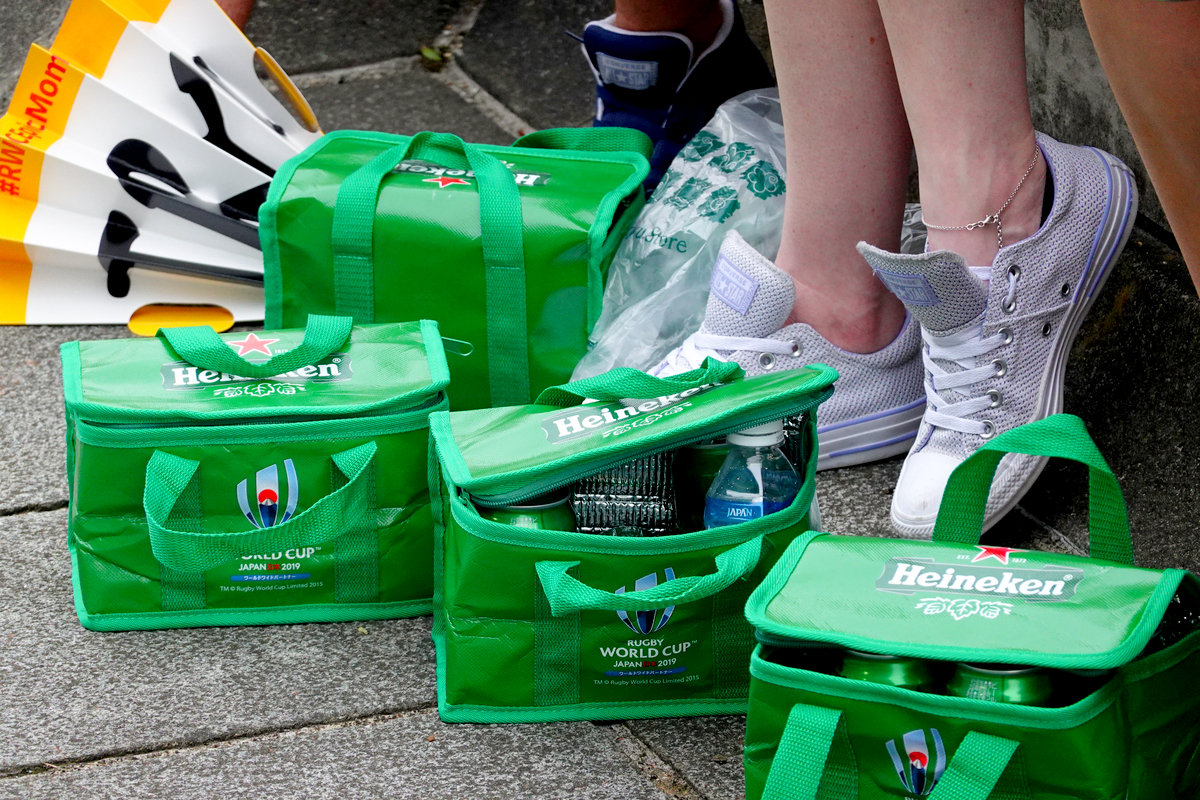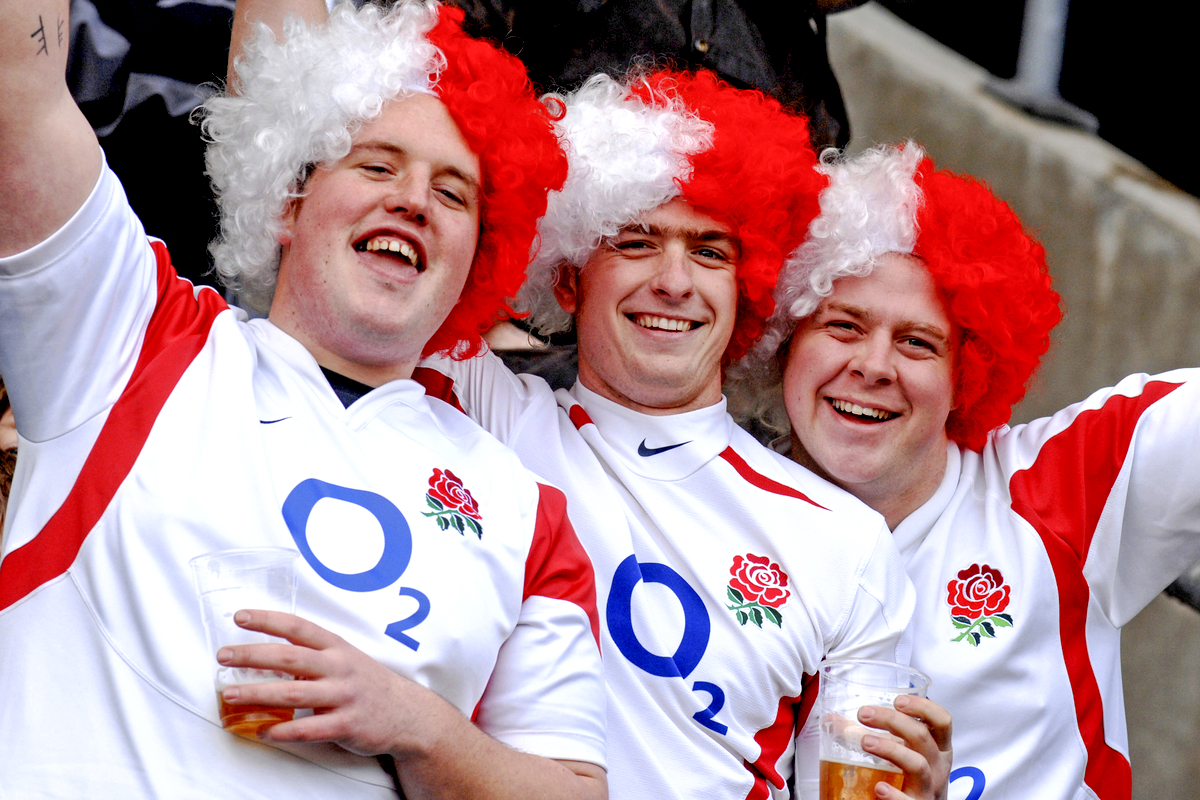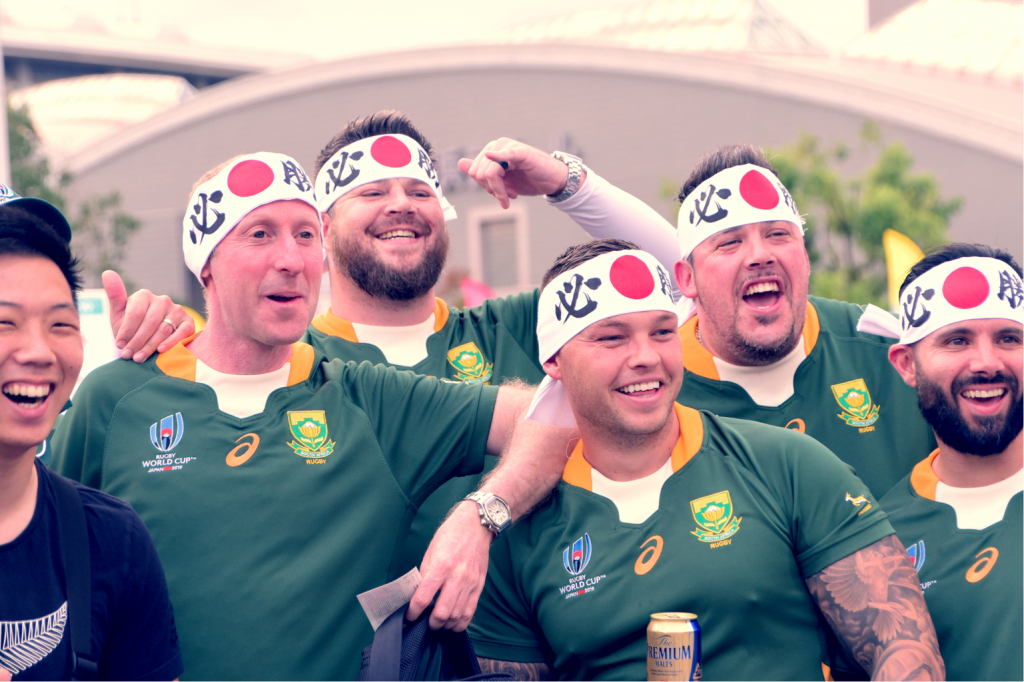If you were to live in Shin Yokohama full-time, you’d begin to notice three strong cultural currents flowing through the city. To start with, there’s Yokohama Arena — home to, among other things, boy band concerts. Heading to work around 6:30 in the morning, you’d most likely see lines of hundreds of committed fans (90% young women), sitting on the ground in hopes of grabbing the best available ticket. Coming home from work, the crowd has been activated and mobilized, turning the major sidewalks of Shin Yokohama into one-way lanes.
Second is the Shin Yokohama Raumen Museum, a popular destination for tours looking for an adventurous yet uncrowded place to eat. With their signature red bowl and up-and-down chopsticks hoisting a bite of ramen, it’s a common sight to watch visitors snap photos, mouths open, the ever-enlarging line behind them.
But the biggest attraction is Nissan Stadium, where the Yokohama F-B Marinos play soccer. Shin Yokohama has two common outfits, the suited salaryman wearing a ¥50,000 watch and holding a satchel, and the devoted soccer fan, clad in blue. When there’s a home game, it’s a 10-minute walk from the train station to the stadium, walking across a bridge over Toriyama River.
The grand finale
But, on November 2, 2019, 70,000 fans descended upon Shin Yokohama to do one very important thing: Get dru…I mean, watch rugby.
Two teams — South Africa and England. Being an American, I felt the need to walk around Shin Yokohama and take in the way the city had decided to prepare for such a western avalanche. Here, for what’s it’s worth, is a running diary of what I saw.
4:30p.m. – 90 minutes before the game started. There are two major bars that appear ready to take on as many rugby fans as possible—The Hub, a British Pub, and Highball, known in Shin Yokohama for the life-size figure of a pirate sitting on a bench. At the Hub, several workers stand behind a table in front of the pub’s staircase. They hand out bottles of Heinekens in a blue ice tub for ¥500. Since they’re the World Cup’s main sponsor, the word ‘Heineken’ is everywhere. Along fences, merchandise, kiosks, booths. There’s no escape. Want to be a rugby fan? You. Must. Drink. Heineken.

5:00p.m. – security guards are just about everywhere within a half-kilometer of the stadium. Police patrol the sidewalks, and as it grows dark they pop on their electric blinking vests and flashing red wands. The best touch, in my opinion, is a long police vehicle parked near the entrance of the Hub. If a fracas breaks out, or violence, all police have to do is grab, handcuff, and march the fan to the vehicle, where, depending on the crime he’ll either go directly to jail or just remain in a seat, window shade drawn behind a metal screen, until the end of the night.

5:15p.m. – I can’t help but notice the overwhelming white-and-red support for England. 5-to-1…bent somewhat by inevitable fair-weather English residents who’ve hopped onto the bandwagon at the last moment to showcase a bit of patriotism. Crowds are beginning to gravitate toward the stadium. Three men in English gear let out one of those guttural roars, only to quickly recover as a Japanese family walks by, the father and mother holding the hands of their little one. Her cheek is painted with the England flag, and the men, seconds ago letting out their barbaric yawp, remember their civility and crouch down to the smiling girl. “Ni—ppon, Ni—ppon,” they chant sweetly as the girl smiles.
“Behind hard plastic on an outer wall of Highball is an A4-sized flag of England, the words ‘England Only’ below. The longer it stays, the more in my mind it conjures old signs of segregation and apartheid.”
5:40p.m. – Three helicopters fly over and around the stadium. Over at Highball, a large crowd begins to gather on the sidewalk, their mass contained by interconnected orange safety cones. Behind hard plastic on an outer wall of Highball is an A4-sized flag of England, the words ‘England Only’ below. At first I shrug it off as a bad joke — perhaps the manager of the restaurant choosing to display his support for the team — but the longer it stays (and it remains most of the night) the more in my mind it conjures old signs of segregation and apartheid. This one sour note aside, most appear to be enjoying themselves as they watch the big screen from outside, beers in hand, some fans (Japanese and Western) with painted flags of South Africa on their cheeks sitting both inside and out. Seeing this, I leave the issue alone.

6:00p.m. – 7:45p.m. – The eye of the storm. Restaurant workers and staff take the opportunity to hose down sidewalks and collect empty beer cans and bottles. The sheer size of one plastic-bag pile of beer cans and bottles is herculean — amplified by the fact that all of the plastic bags are either clear or white (as is mandatory in Japan). Once again, ‘Heineken’ reminds me of its existence. Booths filled with New Zealand All-Blacks merchandise pepper the streets, and I can’t help but think how disappointed sellers are not to have NZ in the final.
At just before 8p.m., car horns begin to honk. It’s official — South Africa 32, England 12. The Springboks are 3-time World Cup champions.
8:30p.m. – Most of the South African fans remain in the stadium, cheering on their championship team. This leaves waves of gutted English fans jetting toward the train station. “One more block,” says a disappointed fan to his friend while staring at his phone. Another man and woman discuss the drama surrounding their colleague at work. “Does she realize the work she’s giving others?” For many, it’s back to the grind of reality.
9p.m. – ? As the night progresses, random songs are sung by fans in restaurants across Shin Yokohama. National Anthems, war cry chants. For Japan, it’s a chance to sing as well. Minus a typhoon outside their control, the country has successfully completed an error-free World Cup — a trial run before the Tokyo Olympics.
Feeling nostalgic? See more on Japan’s Rugby World Cup 2019 here.









